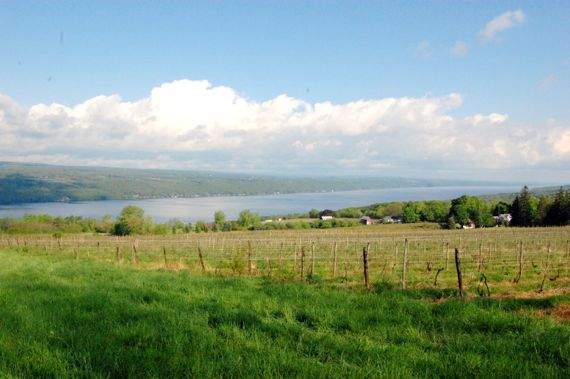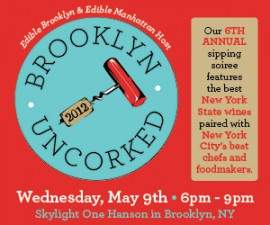Will Climate Change Help the Finger Lakes Wine Industry? Here’s Why it Might

By Evan Dawson, Finger Lakes Editor
I read an article this week that has me thinking about climate and winter and the Finger Lakes wine industry. We head into Christmas weekend on pace for the second-lowest snow total ever — as in, ever recorded in more than 125 years — along with one of the top three warmest Decembers. So with my brain already stuck on the subject of unusual weather, I was interested to hear the take of the wine and science communities on how climate change has impacted other major wine regions.
This piece comes from John McQuaid, a journalist focusing on science and the environment and, evidently, wine. McQuaid points to a handful of new studies and scientific findings that indicate the globe is slowly warming, and he zeroes in on the impact on wine regions:
- The average growing-season temperature in 27 prime wine-producing regions around the world has risen 2.3 degrees Farenheit in the last half-century
- That temperature increase nearly doubles in Spain, Portugal, southern France, parts of California, and Washington State.
This runs parallel to some of the conversations I've had this year with Alan Lakso, a professor (and a brilliant one) at Cornell who has done extensive work in understanding how climatological forces impact the Finger Lakes region. Our discussions centered on the following observations:
- In the Finger Lakes, the average summer highs are not markedly rising, but the average winter lows are
- This tends to lead to a longer growing season, because spring thaws tend to happen earlier
- Even though deep freezes are less common, vines are still at risk because temperatures are more likely to swing wildly
This last point is significant. The often-quoted magic number is -10 degree Farenheit; that's the threshold when vinifera vines will start to die with any extended exposure. But Lakso explained to me that vines can be similarly shocked (injured or even killed) when the temperature hits zero… if the temperature has fallen, say, 30 to even 50 degrees in a single day or two. The vines would not be accustomed to the cold, and without a little practice and protection (and often without the warmth of a snow pack), bad things can happen.
The ideal scenario is a vintage like 2010, which saw budbreak in April. Growers were nervous; they know that an April budbreak leaves buds vulnerable to debilitating frosts. But for the most part, that didn't happen in 2010, and the result was a historically long growing season that gave wine producers plenty of options on ripeness, style and picking schedules.
Notice I didn't say that 2010 was "hot." It was simply long, consistently warm. And I think that distinction is where McQuaid might be tripping up, as he puts forward a bit of hyperbole in his analysis. He cites a study indicating that Bordeaux is seeing average temperatures rise too far for white varieties to thrive. By 2049, "No more Sauvignon Blanc" in Bordeaux, McQuaid writes.
The data hasn't convinced me that the future is so severe and so close to our doorstep, and longer growing seasons don't always equal hotter growing seasons. But certainly McQuaid makes another valuable point: Longer growing seasons have opened up new opportunities in cool climate wine regions. He mentions Long Island and Canada's Prince Edward County as examples. Certainly the Finger Lakes is another.
But before we celebrate, we must remember that the cooler a wine region's climate, the more susceptible it is to vintage variation. Even as we experience longer seasons, there is extreme variability. The glorious 2010 vintage was preceded by 2009, when Finger Lakes winemakers knew by July that Bordeaux red varieties were bound to struggle. And the 2010 vintage was followed by a winter that saw a few of those vertiginous drops in temperature; some Keuka Lake growers experienced serious winter injury as a result.
It's too early to draw conclusions regarding what climate change means for wine regions and wine lovers. But by now there is enough data to know that New York State is well positioned for a long, successful winemaking future. After all, the best wines are already earning the world's attention. Longer growing seasons and more options can only broaden the arsenal.












Nice synopsis, Evan. It is evident that things are warming up and you can taste it in the wines. Hopefully the lakes will continue to moderate the extreme swings that might be harmful to grapevines. Robin’s cousin farms cherries near the lake and his records in 2010 indicate about a 3 week shift in harvest dates since 1973. That’s pretty significant.